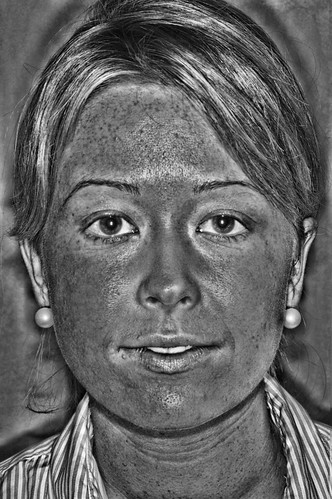 1. How do sunburns relate to tanning and cancer?
1. How do sunburns relate to tanning and cancer?a. One blistering sunburn during childhood (happens to many first time tanners) more than doubles the chance of an individual getting skin cancer later in life. (Skin Cancer Foundation, 2008)2. Why should I be concerned about tanning?
a. Less than 1/3 of teens practice effective sun protection practices and less than half use sunscreen, all these practices lead to an increased chance for cancer.(Skin Cancer Foundation, 2008)3. How many teens use sunscreen?
a. Less than half of all teens use sunscreen. (Skin Cancer Foundation, 2008)4. What is Melanoma?
a. Melanoma is the most dangerous form of skin cancer, which begins in a skin cell called a melanocyte. Melanocytes known as melanin produce skin pigmentation that provides the natural skin color. Melanocytes produce large amounts of melanin as part of the tanning process when exposed to sunlight trying to help protect the skin from burning. But these groups of melanocytes in the skin can become cancerous and spread to other parts of the body.(Cancer Research Institute, 2008)5. How can I spot melanoma?
a. Remember the ABCD’s of Melanoma. A = asymmetrical. Melanoma spots usually have an irregular shape whereas moles are usually round (symmetrical). B = border. The border of a melanoma skin spot will be patchy and uneven and moles usually have smooth borders. C = color. Melanoma patches usually have several shades of black and brown but moles usually will be just one shade of brown. D = diameter. Melanoma spots will often be larger than the size of a pencil eraser (1/4 inch) and moles are often smaller. (CDC, 2004)6. Who is at Risk?
a. Through exposure to ultraviolet (UV) radiation the sun is thought to be the main cause of melanoma. Because of this, people with fair skin, red hair, has freckles and those with blue/ green eyes tend to sunburn easily because their skin cells tend to have less melanin. It is important to protect yourself between 10:00am and 3:00pm when the sun rays are the strongest. When exposed to the sun, even during the winter months, sun protection factor (SPF) of 15 or higher is recommended to apply to all exposed skin. Wearing wide-brimmed hats, long-sleeved shirts and long pants help to protect yourself. Children, Infants and teens may not see the long-term damaging effects for many years and blistering sunburns during childhood is found to be a major contributing factor to developing melanoma later on in life. Special sunscreens are available and are found to be effective in protecting children. (Cancer Research Institute, 2008)7. Where do skin cancers most commonly occur?
a. Melanoma and non-melanoma cancers can occur anywhere on the body. Basal and squamous cell cancers usually appear in regions of the body that are exposed to constant sunlight over a period of years, which is a common concern for outside laborers like farmers. The areas are typically the face, head, neck, arms and back of hands. Melanoma, on the other hand, is more likely to occur on regions of the body that experience intense and infrequent exposure to sun, for example from sunbathing or going on vacation in sunny areas. The areas most affected by melanoma are the chest for men, and the backs of lower legs for women. (CDC, 2004)8. Which brands of sunscreen are the most effective?
a. The Environmental Working Group recently did a study of more than 1,000 brands of sunscreen and found the most effective and least hazardous to be the following brands: Blue Lizard, California Baby, CVS, Kiss My Face and Walgreens Zinc Oxide. Some of the worst offenders were the popular brands, Coppertone, Banana Boat, and Neutrogena. (Houlihan, 2007)9. What should I look for in an effective sunscreen?
a. The best sunscreens will say on the bottle they protect against both UVA and UVB rays. The ingredients should also be free of harmful chemicals such as oxybenzone. (Houlihan, 2007)10. How can I perform a thorough self examination for skin cancer?
a. Participate in regular self-checks of the skin to determine if there are any new abnormalities present that did not exist prior to your last self-check. In order to perform an accurate and thorough self-examination, a full-length mirror, a hand mirror, and well-lighted room are necessary. To complete self exam:
• Examine your body front and back in the mirror.Resources
• Stretch and bend arms, paying close attention to the elbows and palms of your hands.
• Look at your legs and feet, especially between your toes and bottom of soles.
• Examine your back and buttocks with a hand mirror.
• Look at your neck and scalp with a hand mirror (use a blow dryer to move hair on your scalp).
It is important to report any suspicious or abnormal spots or moles to your doctor. Make sure your doctor looks at your skin during routine physical exams as well(The Ohio State University Comprehensive Cancer Center, 2008).
Cancer Research Institute. (2008). Conquering Melanoma: Prevent it, Spot it, Treat it. Retrieved January 26, 2009, from Cancer Research Institute: http://cancerresearch.org/Resources.aspx?id=192
CDC. (2004, August 24). EXCITE Skin Cancer Module. Retrieved January 28, 2009, from Centers for Disease Control and Prevention: http://www.cdc.gov/EXCITE/skincancer/mod10.htm
Houlihan, J. (2007). Comments from EWG on the U.S. FDA's Proposed Amendment of Final Monograph for Sunscreens. Environmental Working Group. Washington: Environmenal Working Group.
Skin Cancer Foundation. (2008). Quick Facts About Teen Tanning. Retrieved February 2, 2009, from Skin Cancer Foundation: http://www.skincancer.org/quick-facts-about-teen-tanning.html
The Ohio State University Comprehensive Cancer Center. (2008). Skin Cancer FAQ. Retrieved February 2, 2009, from The Ohio State University Comprehensive Cancer Center: http://jamesline.com/cancertypes/skin/faq/Pages/index.aspx


No comments:
Post a Comment